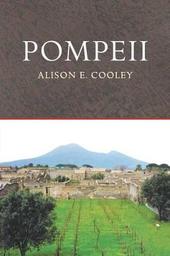
|
Pompeii
Paperback / softback
Main Details
| Title |
Pompeii
|
| Authors and Contributors |
By (author) Dr Alison E. Cooley
|
| Series | Archaeological Histories |
|---|
| Physical Properties |
| Format:Paperback / softback | | Pages:192 | | Dimensions(mm): Height 233,Width 156 |
|
| Category/Genre | Classical Greek and Roman archaeology |
|---|
| ISBN/Barcode |
9780715631614
|
| Classifications | Dewey:937.7 |
|---|
| Audience | | Tertiary Education (US: College) | | Professional & Vocational | |
|---|
|
Publishing Details |
| Publisher |
Bloomsbury Publishing PLC
|
| Imprint |
Bristol Classical Press
|
| Publication Date |
30 October 2003 |
| Publication Country |
United Kingdom
|
Description
Pompeii is Italy's third most popular tourist attraction, with millions of visitors each year. Images of the town are familiar all around the world. But even today our picture of the site is being changed by new archaeological discoveries. The concerns and techniques of today's archaeologists are far removed from those of the earliest excavators. Before turning to the cultural and political background behind the site's rediscovery in 1748, Alison Cooley examines whether it really did remain undisturbed up to that point. In the second half of the nineteenth century the fall of the Bourbon monarchy dramatically heralded a new era of archaeological exploration under the direction of Giuseppe Fiorelli. And in the twentieth century excavation transformed our image of the urban environment of Pompeii, raising new questions as it dug ever deeper. This book explores the impact of scientific advances, archaeological innovations, and contemporary politics upon interpretations of Pompeii over the last 250 years, including the ways in which advances in volcanology have transformed our picture of its last moments.
Author Biography
Alison E. Cooley is Lecturer in Classics and Ancient History at the University of Warwick, UK. In 2004, she was awarded The Butterworth Memorial Teaching Award.
ReviewsCooley's is the first comprehensive overview of the history of the Pompeii excavations, and the discussion of the casual explorations of the site that seem to have occurred prior to the official beginning in the mid-18th century presents material that few of us have ever examined. -- New England Classical Journal
|